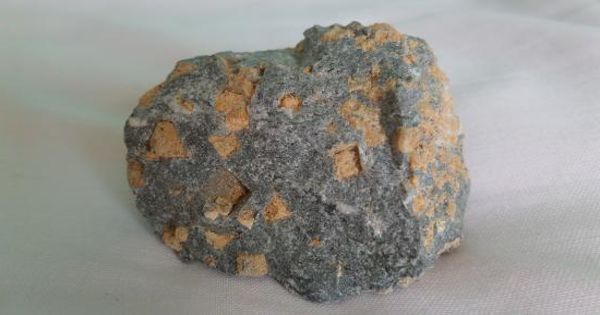Narsarsukite is a rare silicate mineral. It is not a well-known mineral, but it is a nice collection mineral. Its chemical formula Na2(Ti,Fe3+)Si4(O,F)11 or Na4(Ti,Fe)4[Si8O20](O,OH,F)4. It is a mineral consisting of a silicate and fluoride of sodium, iron, and titanium. It is a yellow silicate and fluoride of sodium, iron, and titanium, occurring as transparent or translucent crystals of the tetragonal system.
It is named for the wonderful mineral locality at Narsarsuk, Greenland, from where the first specimens were described in 1900. It was first described in 1900 as an occurrence in the Narsarsuk pegmatite in the Ilimaussaq intrusive complex of West Greenland.
General Information
- Category: Silicate mineral
- Formula: (repeating unit) Na4(Ti,Fe)4[Si8O20](O,OH,F)4
- Crystal system: Tetragonal
- Crystal class: Dipyramidal (4/m)
- Color: Honey to lemon-yellow, reddish brown, brownish gray, tan, pink.

Properties
Narsarsukite forms olive-green, honey-yellow to lemon-yellow, reddish-brown, brownish-gray, tan, pink crystals of small size. It is a tetragonal-dipyramidal mineral containing fluorine, iron, oxygen, silicon, sodium, and titanium. The material can be faceted into small attractive gems.
- Crystal habit: Occurs as flat tabular to equant, striated crystals In divergent, radiating groups; massive
- Fracture: Uneven to subconchoidal
- Tenacity: Brittle
- Mohs scale hardness: 5.5 – 7
- Luster: Vitreous, pearly on {110}
- Streak: White
- Diaphaneity: Transparent to translucent
- Specific gravity: 2.64-2.83
- Optical properties: Uniaxial (+)
Occurrences – In pegmatite (Narss^arssuk, Greenland); in quartz veins in syenite intruding limestone (Sweetgrass Hills, Montana, USA); in hornfels, igneous breccia, and marble xenoliths in an intrusive alkalic gabbro-syenite complex (Mont Saint-Hilaire, Canada).
It has also been reported from a syenite that intruded limestone in the Sweetgrass Hills, Montana, and within hornfels and marble xenoliths in the alkalic intrusive of Mont Saint-Hilaire, Quebec.
It occurs associated with aegirine, microcline, albite, elpidite, epididymite, taeniolite, pectolite, calcite, galena, and quartz.
Information Source:
















